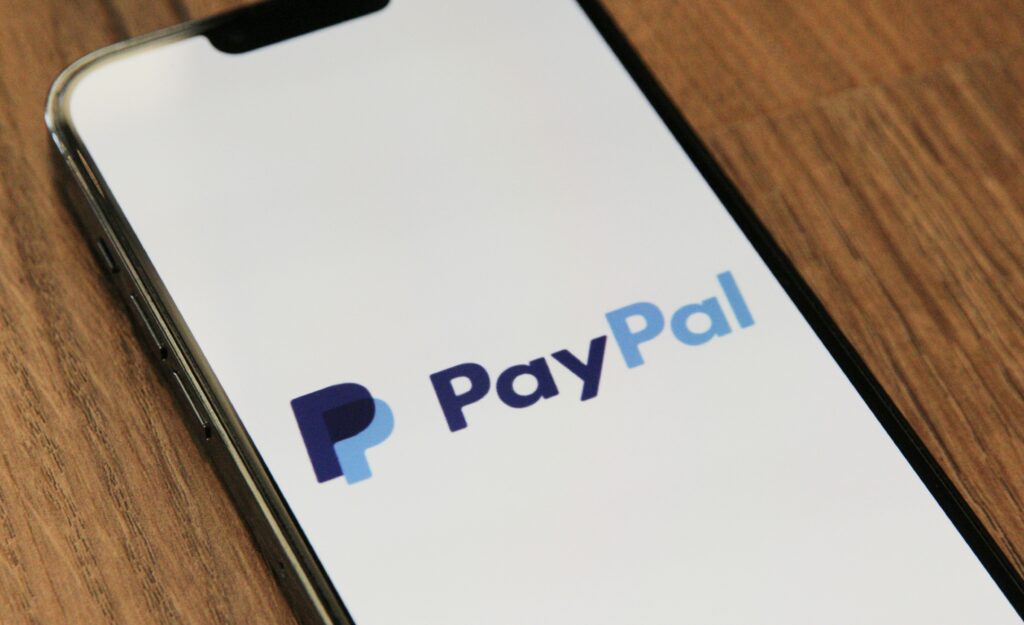Stripe is notorious for holding merchant funds, freezing accounts, and even terminating accounts. That means no money in, no money out, and no customers. In some cases, Stripe holds funds up to 180 days with weekly emails coming in stating, “Stripe is holding your funds for 90 days.”
But wait, didn’t we just say Stripe holds funds for 180 days? Why do they claim 90 in their emails?
Those subsequent emails aren’t reminders, they are renewals of a 90-day hold period. And disputes from customers/users can only take place within the first 180 days. Do the math and you’ll see that working with Stripe.com can be a financial nightmare.
If you have, unfortunately, found yourself in this situation then we have some tips for you. Follow along for advice on how to get the Stripe payment provider to release withheld funds, alternatives to Stripe accounts, and how you can keep your business going even if there is a freeze on your merchant account.
Why Stripe Holds Funds, and Freezes or Terminates Accounts without Notice
Stripe and similar companies hold funds as a method of halting transactions from risky merchants.
The three types of Stripe holds include:
- a temporary hold until you perform an action
- a fully frozen account where funds cannot go in or out and you cannot process new transactions
- account termination where you no longer own, operate, or access your Stripe account.
The reasons why a company like Stripe putting a hold on funds could be due to changes in account behavior. But for most e-commerce business owners, the reasons are most likely disputes, chargebacks, and high-ticket transactions.
Stripe is not friendly toward high-risk merchants. Usually when they withhold funds from you for being high-risk, you’re company will be “MATCHed” or blacklisted. Industries affected include sellers of supplements, CBD, or vapes/e-cigarettes, and companies that work with adult content, advice, or dropshipping.
The icing on the cake is when they do hold funds, it’s likely that your account will have a negative balance since nothing can be processed.
If you browse their Better Business Bureau page or Ripoff Report page, you’ll see endless complaints about the company from merchants. Sudden account termination is the most common complaint, followed by abysmal customer service and zero fraud protection.
Stripe can be a great processor for many low-risk businesses, as it is very easy to use. But for many users like you, it only hurts your cashflow.
What Stripe’s User Agreement Says About Holds, Freezes, and Termination
It’s very difficult for certain types of companies to be approved to use Stripe as their payment provider, but not impossible. Keep in mind that if you plan to continue working with them, there’s not much you can do about potential holds.
According to their user agreement, Stripe is free to impose a reserve at any time for any reason. They also have the ability to change the condition of the reserve based on continued assessments. This is completely subjective, so it’s entirely up to the person or people reviewing and monitoring your account to decide whether to impose a hold, to release it, or to extend it.
Stripe is equally free to freeze and terminate accounts at will, as stated in the user agreement.
Stripe sucks! Let us help you escape.
What You Can Do About Withheld Funds
Now that Stripe’s burned you and taken your money, what do you do? There are only three things you can do to keep your business running and get your funds back.
Open a New Merchant Account
The first step is to open a merchant account with another payment provider. It is completely legal to hold multiple merchant accounts for the same site or service.
In fact, you should always a backup payment processor for several reasons, including holds. Some are better for international sales so you can accept more than USD, others have better pricing when using certain card networks. Every processor has its pros and cons. It’s up to you to weigh those benefits with the costs that follow.
Opening a new merchant account doesn’t release the withheld funds from Stripe or unfreeze an account. However, a new merchant account allows you to keep your store open for sales so you can process payments and new orders. So while your payout schedule might be heavily affected by Stripe’s hold on funds, you won’t be completely overburdened with debt and you’ll always have something in your account balance by receiving payouts from your backup processor.
Inform Your Customers
Once opened, you should contact the customers whose orders are frozen, tell them about the cancellation, and inform them that they the problem is fixed and they can place their order again (maybe with a discount).
The best temporary solution to getting your business running again and salvaging damaged customer relations is opening another account with Stripe, PayPal, or Square (the top three payment aggregators.
DON’T USE THIS AS YOUR PERMANENT MERCHANT ACCOUNT REPLACEMENT. This one is just to get those customers hurt by Stripe’s freeze/hold back into your store.
A permanent solution that both you and your customers benefit from is high-risk merchant accounts. Services like PayPal, Stripe, and Authorize.net are convenient but not cost-effective nor safe for most online businesses. And while their payment gateways are familiar, they rarely act as a deal breaker when it comes to customers making their purchase.
Instead, look for high-risk merchant accounts that:
- have low fees
- cater to your needs as a high-risk merchant (e.g., fraud prevention, chargeback prevention, etc.)
- and allow you to customize the checkout experience.
You’ll have a lower risk of freezes or withheld funds, though the acquiring bank might force a reserve on you—but that’s okay. Reserves may be annoying but they are in place for the protection of the bank, and you can easily negotiate the cap. Take a look at our FAQ Part 1 and 2 regarding fees, rates, and reserves for more on this.
The best part might even be not having to plead with customers to come back and try their purchase again. You’re in the safe zone with high-risk merchant accounts.
Negotiate the Terms for Releasing Funds
Now that your business is back up and running more stable than before, you can focus on the funds Stripe is holding.
The first step of this process is to contact Stripe support. Do not complain; you’re here to negotiate, and to do that you’ll need to get connected with the right person. Tell this employee who you are and ask who you should be in contact with regarding your withheld funds or account freeze.
Remember, you agreed to the funds hold when you accepted the User Agreement.
The agent might tell you that they’re waiting for documentation from you. This could be a bank statement or some other merchant document. Find out who to send it to and do it as soon as you can, don’t put up a fight about it. You want to appear compliant.
The typical length of time is 90 days for withheld funds, though that can range.
The next step is to negotiate the release of those funds which you can do before the set term mentioned. It’s all about risk management. So, if your business is in good standing and you’re taking steps towards fraud prevention, minimization of chargebacks, keeping up with documentation, and communicating with the processor, then you’ve paved the way towards early release.
Outline what you’ve done to minimize risk and tell them you’d like to negotiate the terms for releasing funds. You may have to do this a few times, but don’t badger them about it. You need to maintain professionalism and minimize desperation.
Speaking of desperation, if the funds being withheld are hurting your business, then you should consider taking out a loan. There are working capital loans, bridge loans, and lines of credit you can open in the meantime as a temporary solution.
Need help negotiating? Get in touch
How to Prevent Withheld Funds and Account Freezes
Here’s how you can prevent Stripe from holding funds or freezing your account, whether you want to keep using their payment services or are ready to move on to something better.
Choose the Right Processor
There are many credit card payment processors to choose from, and the most convenient (e.g., Stripe, Square, PayPal) are not always the best for your business in terms of safety and cost.
Pick a payment provider that caters to your merchant type. The best solution is likely to open a high-risk merchant account. In contrast to many third-party providers, you can negotiate your terms and rates. Plus, having a merchant account that’s designed for high-risk merchants won’t force you to run the risk of sudden account termination.
On the consumer-facing side, customers will still have a choice in online payment method in the form of credit cards (Visa, MasterCard, etc.), debit cards, and ACH. You can even customize the checkout experience through APIs and plugins.
Be Honest with Your Account
There is some leeway when using an interchange-plus type of payment processor. Your business account can fall under multiple Merchant Category Codes (MCC), and each comes with their own risk level.
You can pick an MCC that has less risk, but don’t try to blur the lines and make your business appear like something else entirely. Be upfront with your products and services when communicating with your payment processing agent.
It’s also never a good idea to use multiple business models under the same merchant account number. Rates, fees, and terms differ depending on business type. If a processor sees that your sales volume or transactions don’t quite match up with your account, then funds could be withheld and your account could be frozen until after a review.
Minimize Chargebacks and Fraud
Any business is subject to chargebacks and fraud, but high-risk businesses tend to have a higher chargeback ratio.
Your payment solution provider (PSP) can offer support and prevention methods regarding both to keep you in the clear. While no one can guarantee zero fraud and chargebacks, you can control it.
There are safety measures you can implement in the checkout process like 3D Secure to help prevent fraud. For chargebacks, publish a clear return policy and refunding statement while making it easily accessible.
Opening a High-risk Merchant Account with DirectPayNet Can Save You from Sudden Holds, Freezes, and Terminations
Contact us today about your business and we’ll begin the process of setting up a high-risk merchant account with terms we know you can get behind. Don’t let a Stripe freeze destroy your business, get in touch with us today and we’ll get your e-commerce store back up and running in no time.







